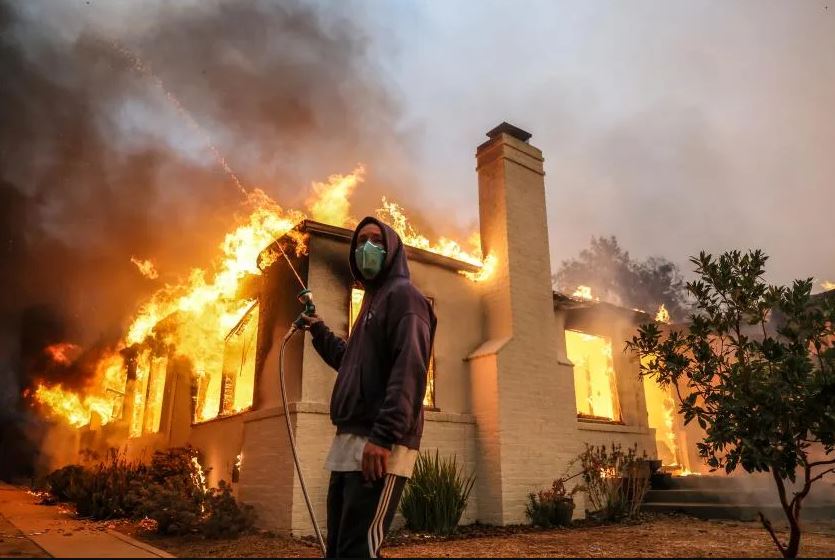California Governor Gavin Newsom has proposed a substantial financial initiative aimed at reinforcing the state’s wildfire insurance fund, a crucial mechanism created to stabilize the energy market and protect Californians from the devastating economic consequences of wildfires. The governor’s plan calls for an additional $18 billion to be injected into the existing California Wildfire Fund, nearly doubling its current capacity and signaling a renewed commitment to addressing the intensifying wildfire crisis fueled by climate change.
The Origin and Purpose of California’s Wildfire Fund
Established in 2019, the California Wildfire Fund was a direct response to a series of catastrophic wildfires that left utility companies facing massive liability claims and financial ruin. Chief among them was Pacific Gas and Electric (PG&E), which filed for bankruptcy in 2019 after being implicated in deadly fires. In order to prevent future bankruptcies that could destabilize the state’s power grid, the legislature created a fund to serve as a financial buffer.
This fund was designed to pay wildfire claims, contingent upon the utility company in question being deemed to have acted prudently. It aimed to ensure the continued delivery of electricity, protect the financial interests of ratepayers, and maintain investor confidence in the state’s major utilities: PG&E, Southern California Edison, and San Diego Gas & Electric (Sempra Energy).
The fund initially launched with $21 billion in capital, split evenly between utility shareholder contributions and monthly fees collected from ratepayers. This unique cost-sharing arrangement allowed for a wide-reaching support system without placing the full financial burden on any one group.
The Need for Additional Funding in 2025
As of mid-2025, the California Wildfire Fund has experienced rapid depletion due to an increasingly destructive wildfire season. Extreme heat, prolonged drought, and climate-fueled conditions have escalated the number and severity of fires, pushing the fund toward insolvency much earlier than anticipated.
Governor Newsom’s administration now seeks to add $18 billion in new capital to sustain the fund’s solvency, ensuring it remains viable for years to come. If approved, this new funding would expand the fund’s total size to nearly $39 billion, creating a robust financial safety net for current and future wildfire disasters.
Who Will Pay for the Expansion?
According to early drafts of the proposal, the same 50/50 funding model would apply:
- $9 billion would come from utility shareholders,
- $9 billion would be financed through extended or expanded ratepayer fees.
California residents already pay monthly surcharges on their utility bills to support the wildfire fund. Newsom’s new plan may extend these surcharges through 2045 or increase the fee structure depending on legislative negotiations.
While this raises concerns among consumer advocacy groups about ratepayer fatigue, the governor’s office argues that inaction would be far more costly in the long run—both economically and environmentally.
How the Fund Operates in Practice
The wildfire fund is not a blank check for utilities. In order to access it, companies must prove they acted in accordance with state safety standards and risk mitigation protocols. If utilities are found negligent—such as failing to trim vegetation or inspect power lines—they are not eligible for reimbursement through the fund.
This stipulation was central to the creation of the fund in 2019 and remains in place under the proposed expansion. The intent is to encourage proactive fire prevention while still offering financial coverage when all reasonable measures have been followed.
Utilities also continue to invest in grid hardening, underground power lines, and advanced monitoring systems. These investments are expected to lower future wildfire risks and reduce the fund’s usage over time.
Political and Economic Implications
Governor Newsom’s proposal lands at a politically sensitive moment. With wildfires already raging across Northern California, voters are acutely aware of the stakes. However, adding billions in ratepayer costs could spark opposition in the state legislature, particularly among lawmakers representing low-income communities disproportionately affected by utility hikes.
Economically, failure to expand the fund could lead to credit downgrades for California utilities, stock market instability, and long-term threats to energy reliability. Investors closely monitor the fund as a backstop that allows utilities to secure financing and continue operations.
In this light, the proposed $18 billion increase is not merely a financial adjustment—it’s a structural safeguard for California’s entire energy ecosystem.
Wildfires and the Escalating Cost of Climate Change
The backdrop to this proposal is a worsening climate crisis. California’s fire seasons are longer, hotter, and more destructive than ever. The 2025 fire season alone has already caused billions in insured damages, with several fires surpassing the size and destruction of infamous predecessors like Camp Fire (2018) and Dixie Fire (2021).
Each wildfire season now has the potential to trigger billions in liability for utilities, making the current fund inadequate to address both ongoing claims and future emergencies. The $18 billion supplement is designed not only to cover current costs but to ensure long-term resiliency in an era when climate volatility is the new norm.
Industry Response: Utilities Endorse the Expansion
PG&E, Edison International, and Sempra have all endorsed the governor’s proposal, stating that the fund is a critical part of their financial planning and wildfire mitigation efforts. By reinforcing the fund, utilities can focus on safety upgrades and technology investments, rather than facing existential threats every fire season.
Their support also stems from the predictability the fund offers in terms of regulatory risk, credit ratings, and insurance coverage. Without a solid fund in place, utilities would be forced to either self-insure at astronomical rates or withdraw from high-risk areas—leaving entire regions without reliable power.
Legislative Path and Timeline
As of now, Governor Newsom’s proposal remains in draft form, with formal submission to the California legislature expected before the end of Q3 2025. Lawmakers will then negotiate the scope, funding mechanisms, and oversight structures. A final vote is anticipated by the end of the 2025 legislative session.
Given the urgency of the issue and the accelerating wildfire damage, insiders expect the legislature to move swiftly. However, debates over ratepayer fairness, oversight authority, and utility accountability are expected to intensify as the bill moves forward.
Conclusion: A Pivotal Moment for California’s Future
The $18 billion expansion of the wildfire fund marks a critical juncture for California. It reflects the reality that climate change has outpaced existing policy frameworks, demanding bold and immediate action. By doubling down on the wildfire fund, Governor Newsom hopes to stabilize California’s energy future, protect vulnerable communities, and preserve the state’s fragile ecological and economic balance.
Failure to act could usher in an era of energy instability, utility insolvency, and environmental catastrophe. With lives, livelihoods, and entire ecosystems at risk, this proposal may prove to be one of the most consequential pieces of legislation in California’s modern history.
Keywords: Gov. Gavin Newsom, California Wildfire Fund, $18 billion wildfire proposal, PG&E, Southern California Edison, wildfire prevention funding, utility ratepayer surcharges, climate change policy California, 2025 wildfire season, California utilities wildfire liability.

